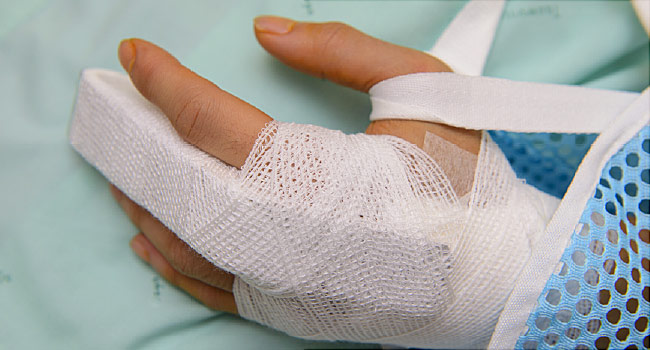Broken versus Sprained Finger: Solving the Dilemma
When an unexpected accident occurs, such as a slip, fall, or a sports-related incident, our fingers can be vulnerable to injury. Broken fingers and sprains often perplex individuals as two common finger injuries. While both injuries can cause pain, swelling, and limited mobility, they have different underlying causes and require distinct treatment approaches. In this article, we’ll delve into the diagnostic process, exploring the key differences between broken and sprained fingers to help you better understand and identify these injuries.
Understanding the Anatomy
Before delving into the diagnostic details, it’s essential to understand the anatomy of the fingers. Each finger comprises three bones called phalanges, except for the thumb, which has only two. These phalanges are connected by joints, ligaments, and tendons, allowing our fingers to perform a wide range of movements with precision and flexibility.
Differentiating Broken Fingers from Sprains
- Broken Fingers: A broken finger, also known as a finger fracture, occurs when one or more of the phalanges sustain a crack or break. This injury often results from direct impact or excessive force applied to the finger, causing the bone to fracture. Symptoms of a broken finger may include sudden sharp pain, visible deformity, bruising, and difficulty moving the affected finger.
- Sprained Fingers: On the other hand, a sprained finger involves damage to the ligaments that connect the finger bones. A sudden forceful movement, such as bending the finger backward or sideways beyond its normal range of motion, can cause ligament stretching or tearing. Symptoms of a sprained finger may include pain, swelling, tenderness, and limited range of motion.
The Importance of Prompt Medical Evaluation
Prompt medical evaluation is crucial when dealing with a potential broken or sprained finger. Ignoring the injury or attempting self-diagnosis and treatment could lead to complications and prolonged healing times. Seeking professional medical attention ensures an accurate diagnosis and appropriate treatment plan.
Diagnosing Broken Fingers and Sprains
To differentiate between a broken finger and a sprain, healthcare professionals use various diagnostic methods, including:
- Physical Examination: The doctor will conduct a thorough physical examination of the finger, looking for signs of deformity, swelling, bruising, and tenderness. They will also assess the range of motion and stability of the finger joints.
- X-rays: X-rays are a valuable tool to visualize the bones and identify fractures. If there is a suspicion of a break, X-rays can help the healthcare provider confirm the diagnosis and determine the severity of the fracture.
- MRI or Ultrasound: In some cases, when ligament damage is suspected, MRI or ultrasound imaging may be used to assess the soft tissues and ligaments surrounding the finger joints.

Treatment Approaches
- Broken Fingers: If the doctor confirms a fracture, they may recommend treatment options such as immobilization with a splint or cast to facilitate proper healing of the bone. In some cases, a minor fracture may heal without surgery, but more severe fractures may require surgical intervention to realign the bones.
- Sprained Fingers: For a sprained finger, RICE (Rest, Ice, Compression, Elevation) therapy is often recommended in the initial stages. An ice pack can be used to reduce swelling and promote healing. During the healing process, the healthcare provider may also advise immobilizing the injured ligament with a splint for protection.
Recovery and Rehabilitation
Following treatment, both broken fingers and sprains require appropriate rehabilitation to restore finger strength and flexibility. Physical therapy exercises play a vital role in the recovery process, preventing stiffness and promoting optimal functionality.
Preventing Finger Injuries
While some accidents are unavoidable, taking precautions can significantly reduce the risk of finger injuries. Proper hand protection during sports or manual activities, maintaining a safe environment, and using equipment correctly are essential preventive measures.
In Conclusion
Differentiating between a broken finger and a sprain can be challenging due to the similarities in symptoms. However, understanding the key differences and seeking prompt medical evaluation is vital for an accurate diagnosis and appropriate treatment. Remember, your fingers are essential tools, and taking care of them with caution and awareness can help prevent unnecessary injuries and ensure a speedy recovery when accidents do happen.

